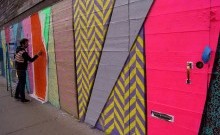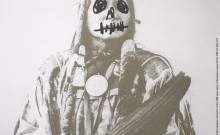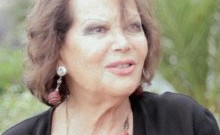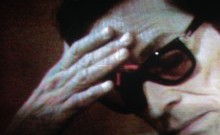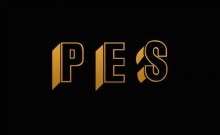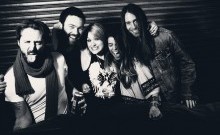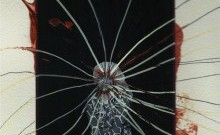Cuando Bloqueadas están las Puertas
"No one wants a nation-wide riot, or a revolution.
We can come to a change in a responsible way, but
it’s not time for that yet. It’s time for the outrage."

Somewhere in the space of the city, there reads a question asked of every passerby, written on every wall --- what is the message that exists here? It comes slowly: first the everyday signs & signals, advertisements, directions, commands & warnings. Then there is the scrawl, which like invisible ink, appears overnight & suddenly alters the cityscape not in appearance alone, but in its reproach for the innocent bystander as well. What, can't you read? It asks us if we can't see the signs, all around us --- signs everywhere.
Symbolically, the culture of graffiti demonstrates a disdain & a reverence for infrastructure & architecture, but mainly for the establishments of property & police. It has been used for centuries, since the earliest forms of writing & storytelling appeared, to communicate what could not be or would not be possible with the spoken word alone. Similarly, the solid rock formations turned to an open tablature, the source of the relics of language became obsolete, as now the institution of the printed word has been threatened. It is a truly prescient set of eyes & a skillful set of hands that can both act upon this knowledge & manage to take & interpret correctly a token yet relevant history. A set of hands, a set of tools like those of Ramon Miranda Beltran.
Beltran, Puerto Rican born & raised, cut his teeth on the punk & hardcore scenes of San Juan & Chicago before making his way to his current home in New York. His particular creations are like monuments to an age defined by an endemic corruption of power & a thirsty media. Mixing concrete & reappropriated images & headlines, Beltran acts as a town crier, a mystic spy, & a deconstructionist force to be reckoned with. His work surpasses graffiti, subverts sculpture, & redefines cross-disciplinary exploration, bringing the craft of seeing & building back to a pre-modern, artisanal approach. I spoke to Ramon on the eve of his departure for Spain, where he was in the process of preparing to install his most recent work, Alien Enemies/No Duty to Retreat at El Centro Atlántico de Arte Moderno (CAAM) alongside 13 other artists --- a collection of shooting range targets used in police training, superimposed by text printed on concrete slabs, drawn from various criminal codes. The show runs through October.
RAMON MIRANDA BELTRAN: Let me know if there’s anything you don’t understand. I won’t get offended.
EVAN LOUISON: I think it’s okay, it’s not as bad as you think it is. People get self-conscious of that aspect of the way they speak, but I don’t think it’s confusing at all.
RMB: I don’t try to hide it either. Some people try to blend more…
EL: Assimilate.
RMB: Yeah I don’t do that.
EL: If an American were to travel to PR & spoke Spanish well, but didn’t nail the accent, it might not matter. Who should care?
RMB: Even in the United States, there’s different accents…
EL: Yeah, many.
RMB: You have people from the South who are living here & they want to blend that, they don’t want that to show, & I think it’s maybe cause of misconceptions people have about the South. And I think you sort of have to own your culture. I mean, there’s parts of Puerto Rican or Latin culture that I don’t like, & I don’t reproduce that, but I’m proud of where I’m from. The language & the accent are a part of it.
EL: Particularly in the cultural centers like the Northeast & California the accents start getting flattened, because people want to assimilate in a metropolitan area. This happens across the country, & people’s identities sort of fade with that effect. The accents are disapparing, New York’s particularly. If you change that, everything will eventually sound the same. You’re from where in PR?
RMB: My family lives in Rio Piedras now, which is a part of San Juan, the capital. But originally we’re all from Bayamon. The island is 100 miles by 35 miles, which is small, but people still think of it in terms of North & South, which seems silly because you can get to anywhere you want to go in 2 hours.
EL: In Italy the difference of regions the same distance as a few neighborhoods away in New York can become like warring factions, like a tribal thing.
RMB: Yeah, vendetta is an Italian word.
EL: So how long before you came here?
RMB: I was born & raised there, so 82 until undergrad, starting in computer science & ending up in photography. I went to Chicago in 2011 or 12 for graduate school.
EL: What was that like, the difference in your experiences from PR to Illinois? Was it extreme?
RMB: It was. I’d never seen snow. (laughs) There are still cities in Puerto Rico, but not like New York or Chicago. I realized it once I was out of there: going from the cities to the suburbs, the American suburbs starting looking really familiar to me. In Puerto Rico, because of the economic relationship with the US, it looks a lot like the suburbs —- it’s like a giant suburb in a way, with all the chain stores & the strip malls.
EL: Oh God.
RMB: Yeah. That’s the way the US gets money out of Puerto Rico. It’s all American chains, chains from other countries. San Juan is the biggest city there, & there’s really strong culture there, nightlife, everything you find in any city. And there ARE scenes. I was part of the punk scene, & that culture there. There were a lot of really good bands, but the people who did things like that, the number was very small compared to what it was like in Chicago. I still haven’t even really grasped it. I was still listening to Puerto Rican bands & my friends’ music when I was there, the whole time. I have some friends who came to Chicago to play, & I went to theIR show, & I think that was the first show I went to when I was in Chicago. The thing is I’m not a musician.
EL: So you spent a lot of time in galleries & museums?
RMB: That I did. I had taken some time in between. I was an assistant to my gallerist now [in PR], & to an artist there.
EL: When did the work shift its focus from photography to manipulating the photographic image & creating objects around those images? Was that a sudden shift, or something that evolved over time?
RMB: I started out taking photos of my friends’ bands. I didn’t have anything to do with art. It was just something I did on the side. But I was doing really badly in computer science. So once I started studying in an art school context, my perspective of the photo medium started changing.
EL: You started treating it more seriously & suddenly it appeared differently to you.
RMB: It was kind of like fucking with the images, but still just straight photos. Until I found out by accident you could transfer photos to concrete. Then I started exploring.
EL: By accident? That sounds like a bigger story.
RMB: (laughs) I was doing wheat paste in Puerto Rico in the street. Then what I was presenting in my classes was kind of a documentation of the wheat paste. But that didn’t feel right, it felt like something was in between me & the art. Of course now I understand that outside was the art, & you cannot present that inside. At that time I was a rookie. So I wanted to bring it closer. I took one of those photos, & I put it on concrete, left it outside. The wheat paste was about war, & I had a bullet hole in the picture, & I was trying to expose the image around that hole, because it’s so warm in Puerto Rico, I left it in the sun. When it got to the point where there was an image, I peeled it back from the piece of concrete, & saw that the image had transferred to the other side. That’s how it happened.

EL: Was that political side of it, wanting to comment on warfare, was that always there?
RMB: I think in a way. We’re all influenced directly by politics. We all have to deal with it, & we all deal with it in different ways. Within the art scene, the art world in Puerto Rico, there are people who are doing formal work, very formal work, & there are people who are doing very strong political work. I don’t think there’s really more one than the other. I think there’s just different ways of dealing with that reality. And you know, like any other place, there’s different classes. In Puerto Rico, I come from middle-class background, my mother was a teacher. My father came from a higher class, but we didn’t have a [good] relationship. So for me, I think I see how politics affect our lives, & I see the potential for how politics can make our life better. So it’s really hard for me to let go of that, even though I’m interested in formal qualities of art, I need to make it all work, to translate what I’m seeing, & I see things politically.
EL: It has to all sort of serve the purpose of what you want to say, no matter what it is. You touch something, & no matter what you do to it, it always becomes a political thing, because it’s impacted in some small way by how you feel. It’s visible, people can see it, like a Red Flag. You wear it, you can’t get rid of it. So you’ve always been working in that sphere?
RMB: Yeah, pretty much.

EL: So what kind of literal or figurative purpose does the concrete serve, & does it contribute to politicizing the process? Is it cause it’s such a part of the architecture of everywhere in the world, & also such a product of industry? Are you trying to set things in stone, literally? There’s a certain connotation when putting newspaper headlines on solid rock.
RMB: I guess it’s all of the above. I’m 6 feet tall, identify as male. The work is really heavy, but I’m extremely critical to the classic idea of the strong male, which —-
EL: Machismo?
RMB: Yes, in Latin culture it’s extremely prevalent, & I’m noticing it in American culture as well, but here it’s just less out in the open. You know, like, I know what this motherfucker is thinking. The difference here is that unless you’re a construction worker, you’re not screaming it. It’s more open in Puerto Rico, more out there, which I have a problem with: if you can imagine a world where you’re a woman, & you’re getting all this input, from all these people, when all you want to do is walk down the street. I’m unlearning things I’ve learned all the time. Even in American corporate culture, the difference in wages alone is how you know it’s just as fucked up here as anywhere in terms of the difference in genders.
EL: The workforce can be an extremely treacherous place for a lot of people. It’s the labor question: a person wants to work, wants to validate themselves through a wage, & it becomes complicated because of sacrifices put in for that desire to work, & strange, often oppressive circumstances put in place between them & their right to work, that validation of being a wage-earner.
RMB: Wage labor is life labor. Going back to the concrete, if I use a newspaper article, I like to use more conservative newspapers, & put it in the concrete, treat it badly so that it cracks, so the concrete is a way of being critical to that idea, the idea of a big, strong man.
EL: You cast all the concrete here?
RMB: Yeah I mix everything & mold everything here, by myself. It speaks to the fact that I have this male body, you know, it’s big & strong, so in a way I have to own that. And at the same time, because of the type of work I’m doing, I’m not only owning my own physical masculinity, but also to use it in a way that is not upholding the oppression.
EL: To speak truth to power with it, not let it define you, but still be critical of it. It’s like a woman who wears makeup —- she doesn’t have to believe it’s a necessity to want to wear it.
RMB: Exactly.
EL: It’s a tricky substance as well. I worked for a bricklayer once, & it’s such a masculine thing, the smell of it, the mortar, the dust. It’s what everything is made of, & yet it’s so delicate, so easy to fuck it up. And everything that we pass through all day long is built out of it, but to do it wrong is so easy. To make it crumble is so easy, it’s amazing that anything’s standing. Masonry’s such a craft, taking into account so much science of pressure & physics…
RMB: It expands & contracts too, it has water inside of it all the time…
EL: The whole empire is built on it. We have to put rock down to build anything, anything that’s substantial in this world, cross every border. It’s like water in a way —- it’s a universal element, & knows no borders.
RMB: What I’m doing now, there are five works that will feature in this show in Spain, & three of them are related to what’s going on in the States, one is related to Spanish politics, & another is more historical.
EL: It’s been such a rough year, at least for the US, I don’t even know where to begin. We are confronted with a lot of direct imagery, because of modernity being so geared towards a record, documentation of everything, everything being captured on tape, just like surveillance. We saw a lot of stuff, a lot closer than we would have before. There were images of the LA riots, of Rodney King’s assault, but I don’t ever remember the level of imagery being so high. In 2001, when the Twin Towers were blown up, I was blown away by the amount of cameras that were pointed right at it already. There were a lot of people who were just shooting it, right as it happened. And those images, we saw them in so many different angles. Now, with Ferguson, we’ve seen so many more images than even then, & that’s still less than 15 years later. The information that’s available, visually, I think it has a different effect on people. What happened in Staten Island with Eric Garner, the unrest around this central issue of control, it’s been heavier on people, & they’ve been more sparked by it than they would have been 15 years ago. So many people have watched the video of Eric Garner dying, so many people have seen that.
RMB: There’s an overflow of images certainly, & this is coming from the citizens, directly. The networks, they have no monopoly over what we see anymore. But what I think is happening, what I can interpret from what I saw in Ferguson or with Eric Garner, is that we get this overflow of images, of things that are outrageous — they should outrage everyday citizens —- this is not okay, this is not something that we can ignore: police violence, racial violence against minorities. But this is not something that started in 2014. In 2014 I think a spark was ignited, but then you have the networks trying to diffuse that situation. You have them commenting on it without controlling the content, so they diffuse it because no one wants a nation-wide riot, or a revolution. We can come to a change in a responsible way, but it’s not time for that yet. It’s time for the outrage.
EL: It’s always put on the public, in the discourse between administrations & their constituents, there’s always this dictum that’s put to the people, to bear the burden of restraint in their dissent. Everybody be responsible, calm down, keep in mind that we’re a community. People don’t feel it. You can’t dictate a response to something that’s so screwed up to the point that even conservative outlets have to acknowledge it.
RMB: There’s a big polarization too: The state feels fragile, & still has that hegemonic power. You see it criticized on the extreme right & the extreme left, but people on the extreme right still want to keep paying cops to keep poor people away from them. And that leads to a breakdown of society.
EL: Cities are changing now, towns are changing now, becoming innocuous & identical, losing their unique qualities, their individuality. And there are a lot more poor people than there used to be. People who 30 years ago would have been assured a place in the middle class today are scraping the lower middle class, just barely trying to carve out a place for themselves. There are also more people in general. Thankfully though, there’s more diversity as well. Where the black population of Oregon was nonexistent as recently as 1926, I think now the last vestiges of white homogeny are on their way out. These changes come painfully to the establishment.
RMB: In the 60s there was organization towards making those changes, mainly from black leaders who were killed —- either from direct intervention by the FBI or a lack of protection from the FBI. These were people who were assets to society, but they weren’t valued, they were identified as a threat instead. They withered away the Black liberation movement almost completely —- Fred Hampton in Chicago—-
EL: MOVE in Philly…
RMB: —- & the Establishment fought back hard, & won, or so they thought —- So they destroyed a group of leaders, & then they’re screwed, because those people have children, & those children have children, & the Establishment thought they could get a cheap workforce from uneducated people, but they have nowhere to put those people now —- the factories are gone. Those people are going to revolt against you. They killed these people all those years ago, & now it’s coming back to haunt them.
Ramon Miranda Beltran is represented worldwide by Walter Otero Contemporary Art









